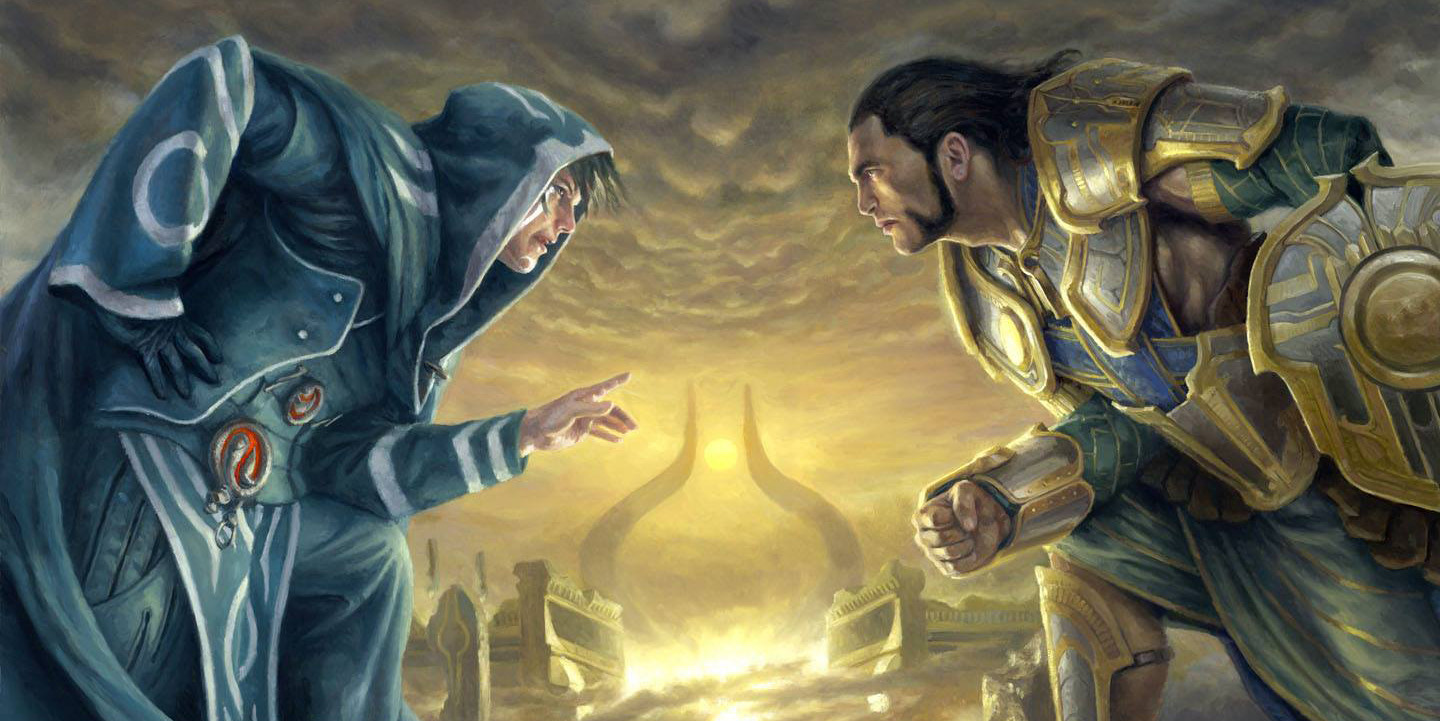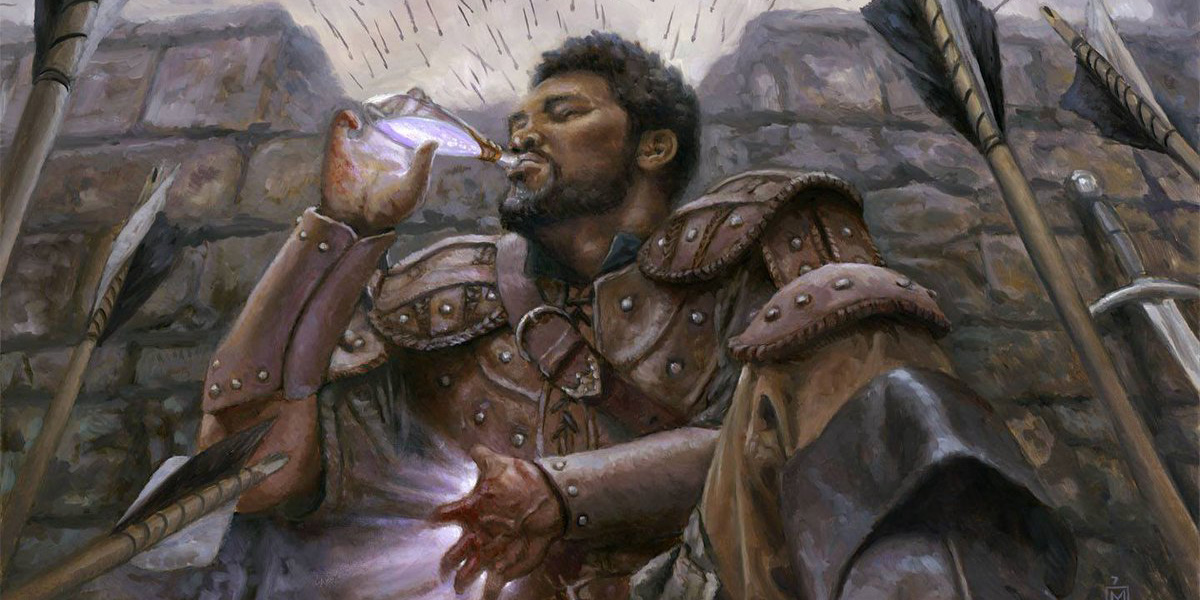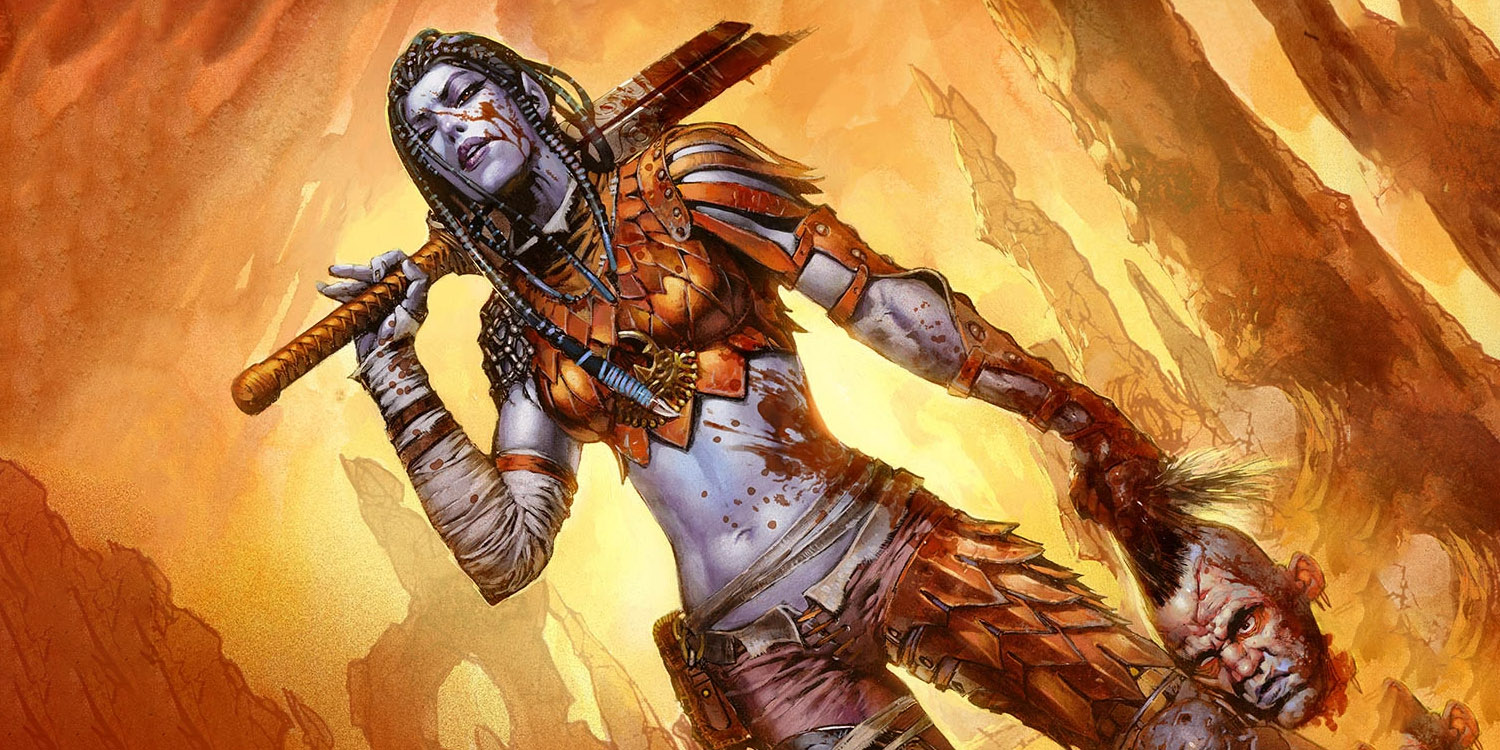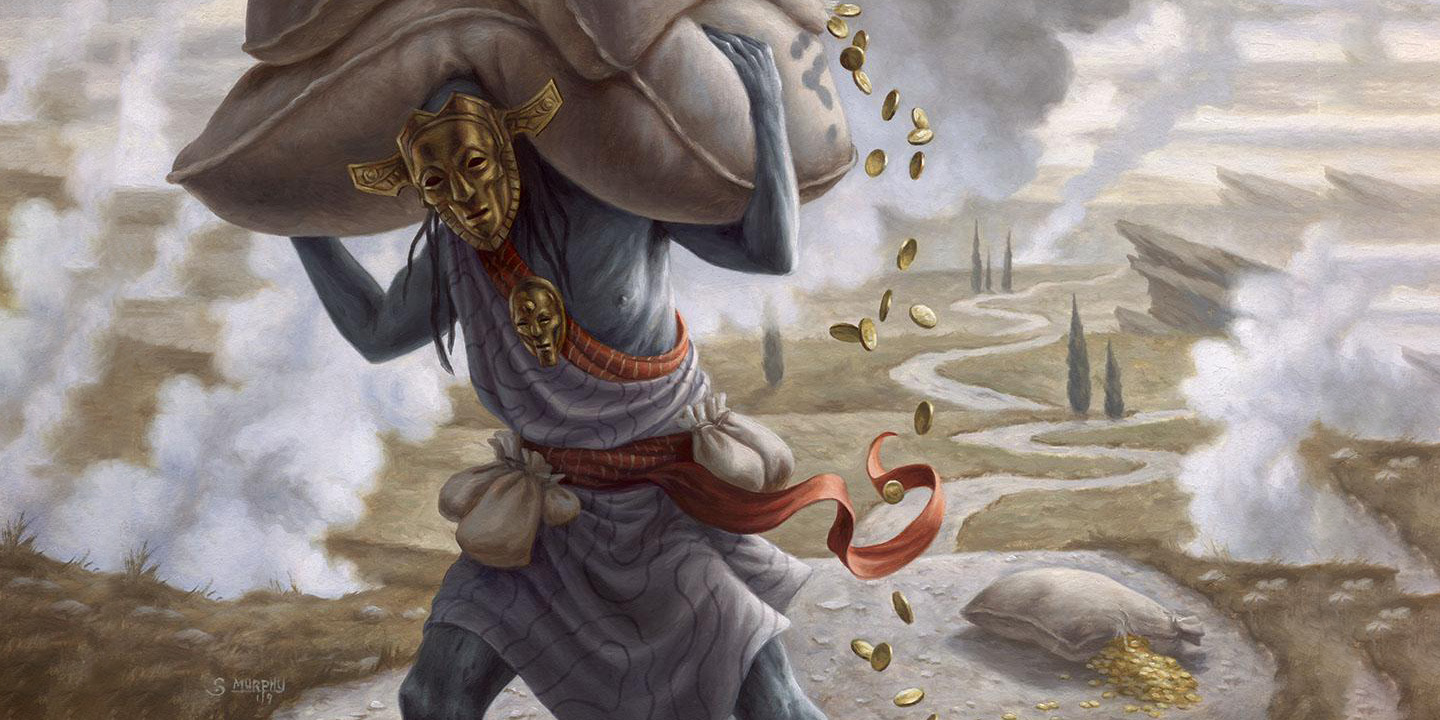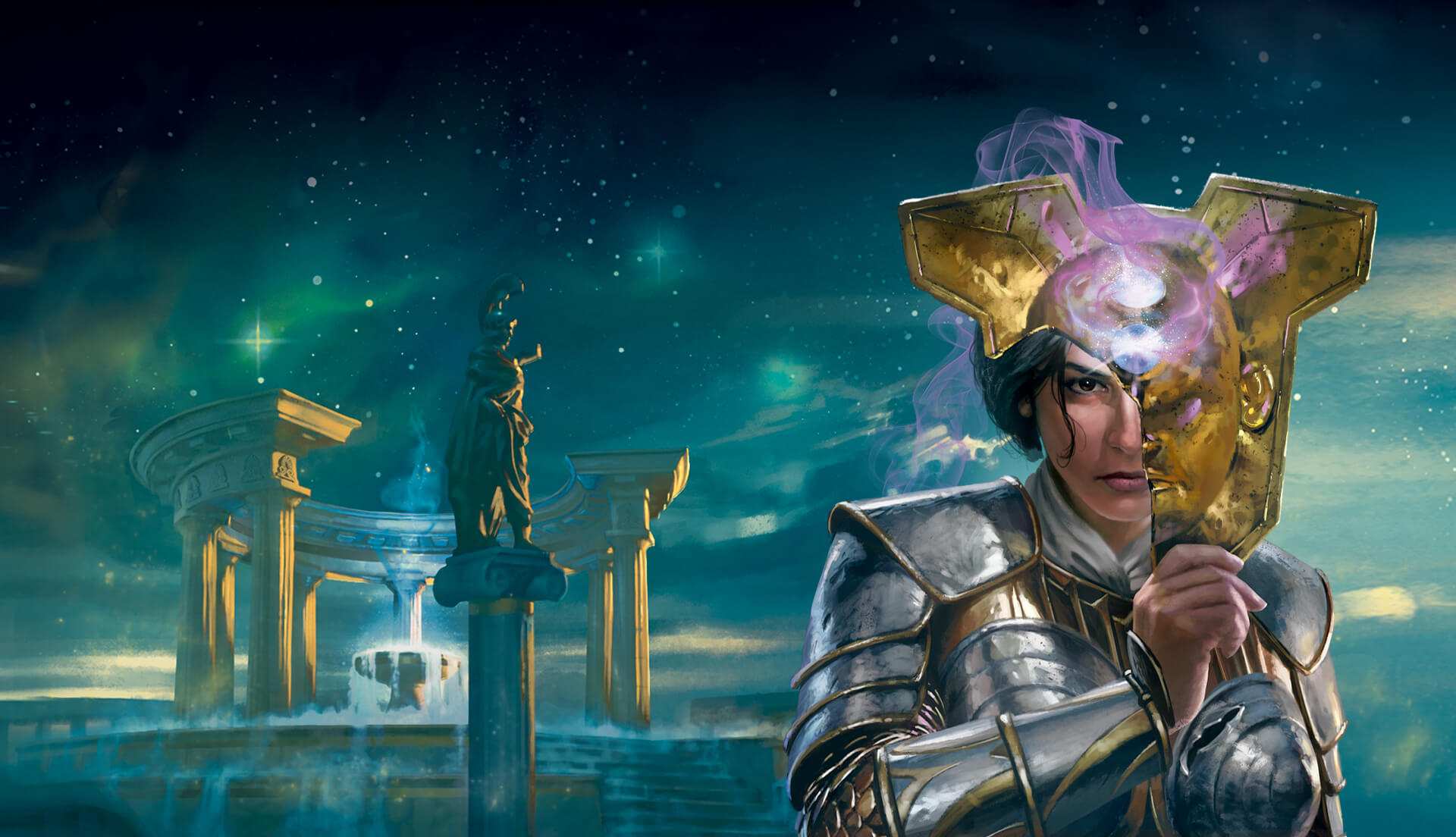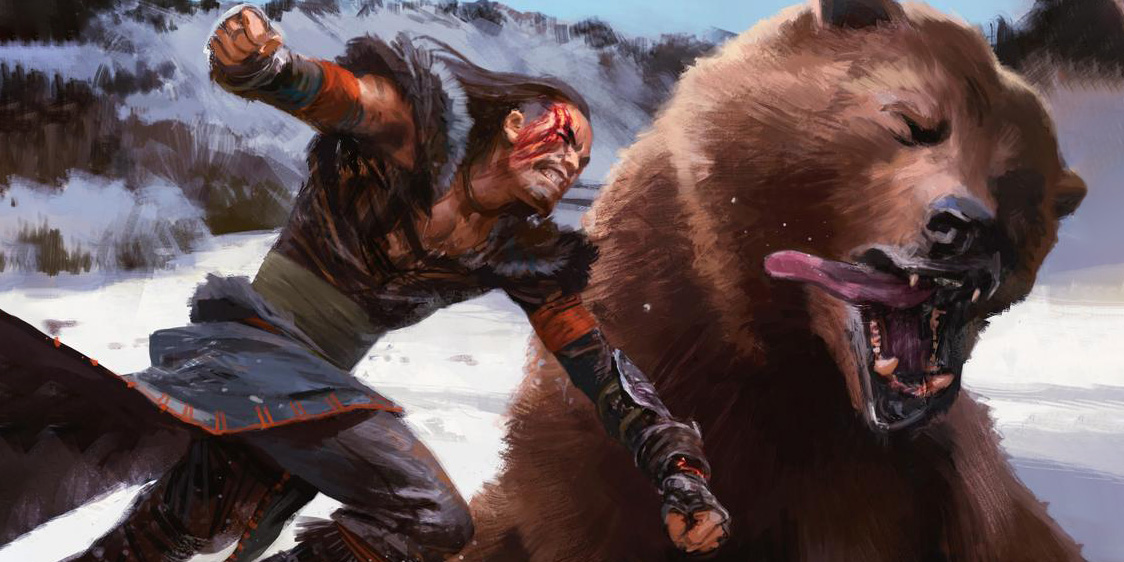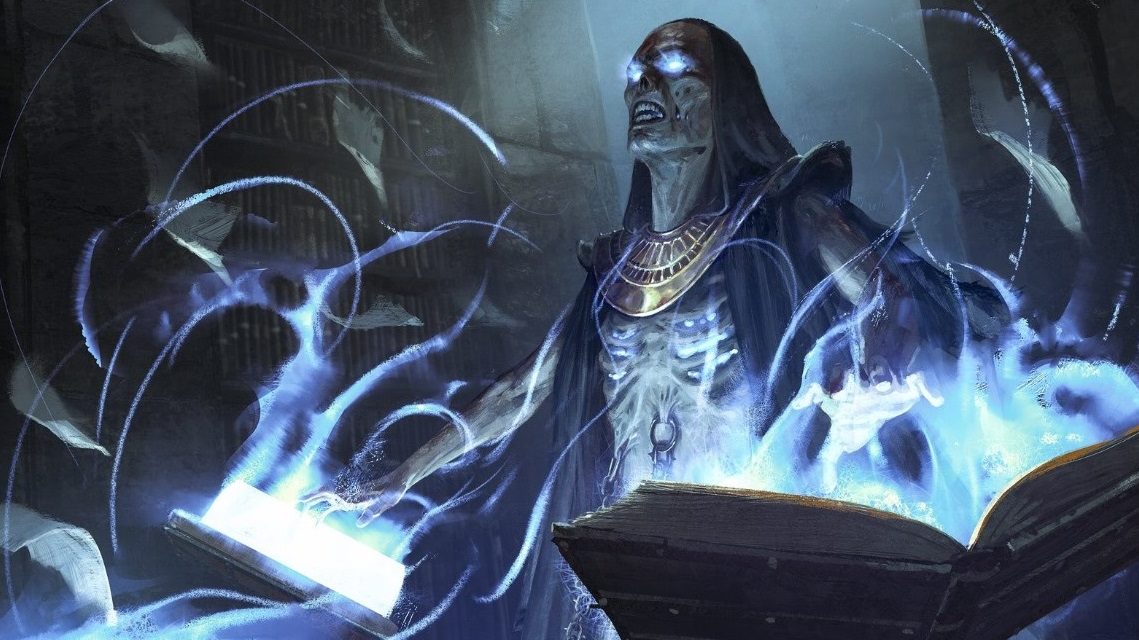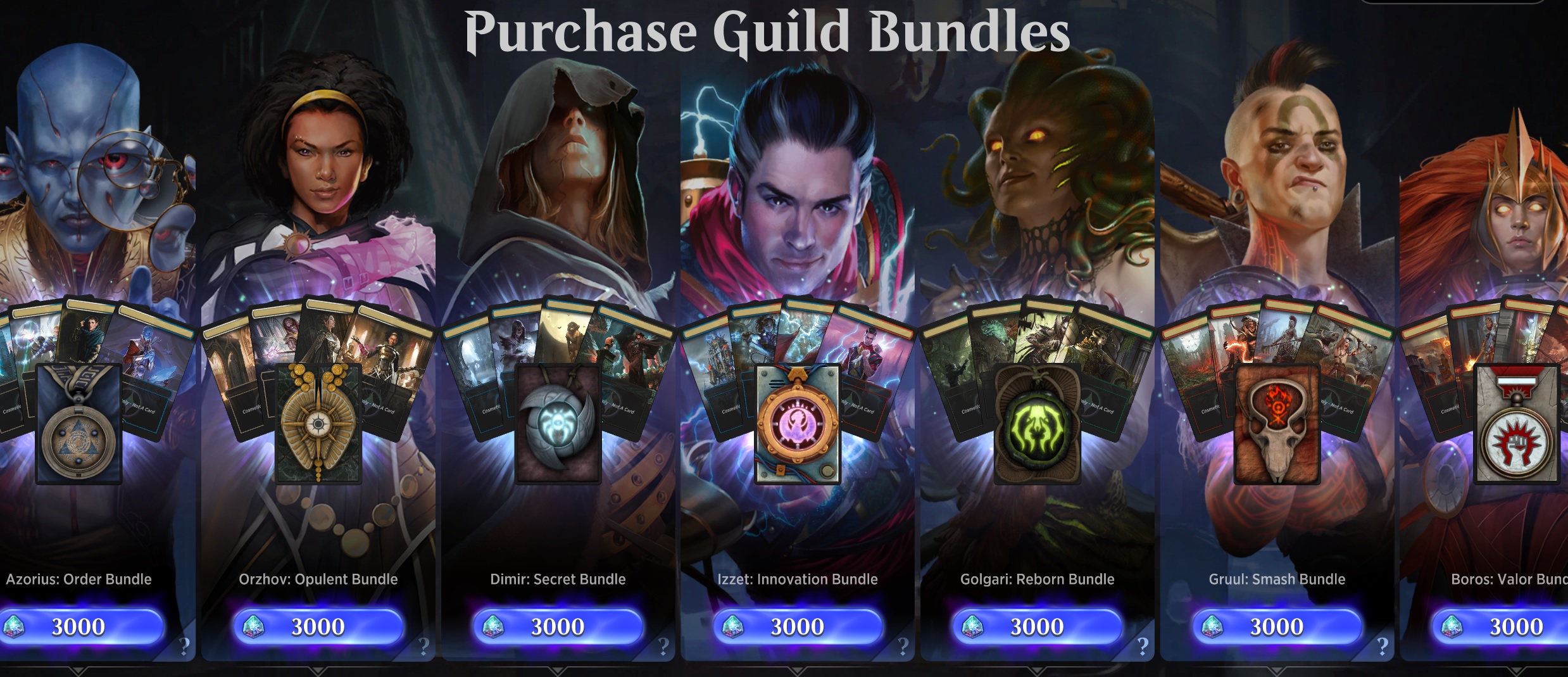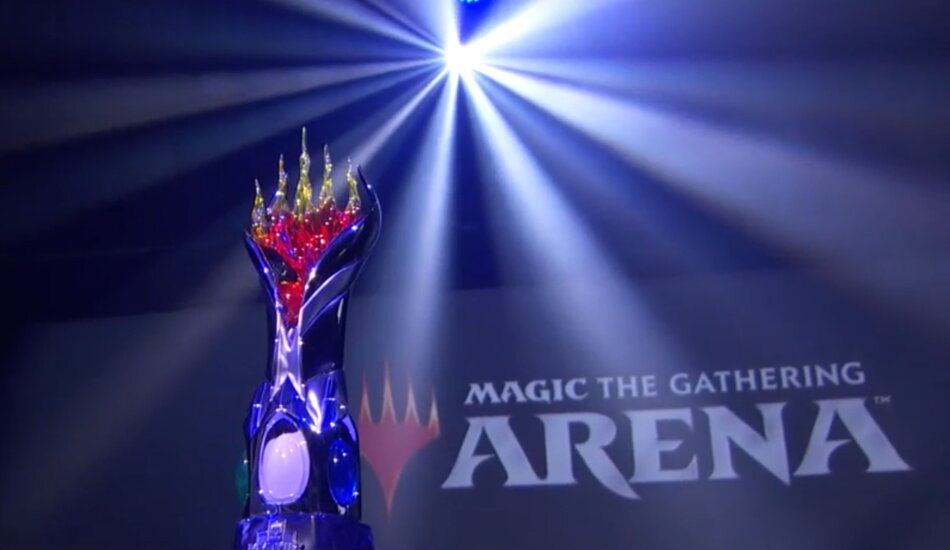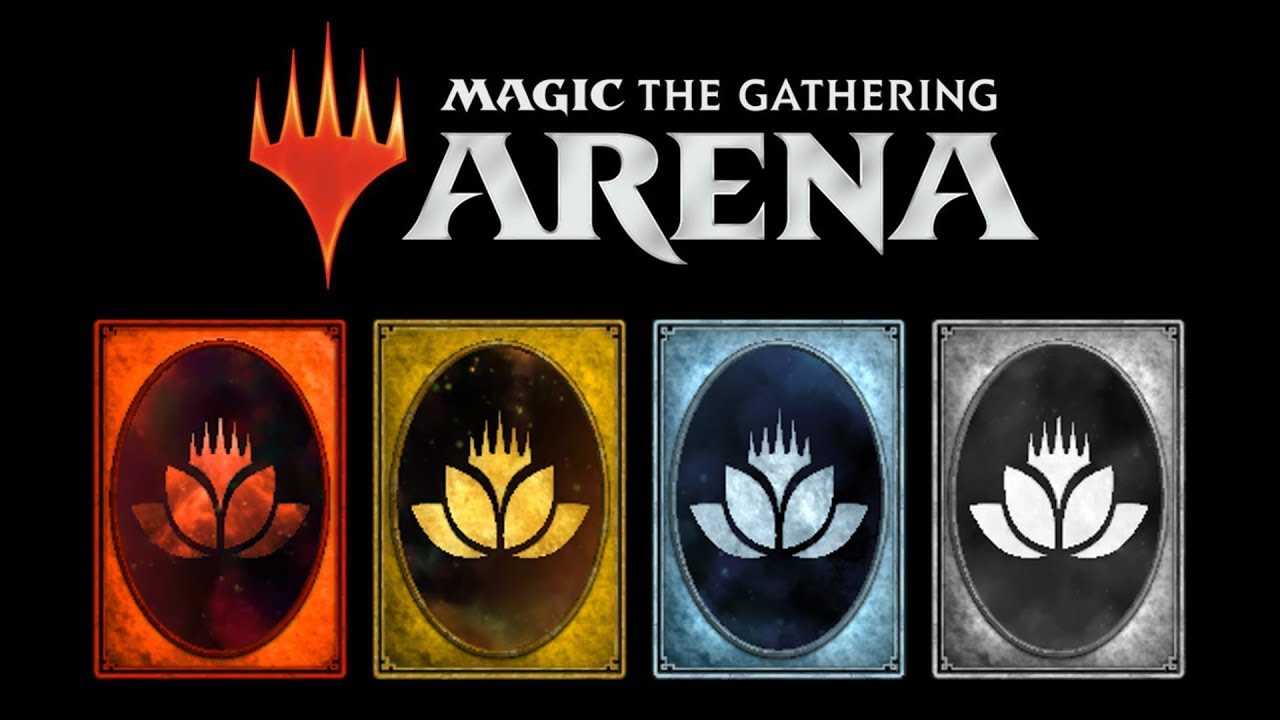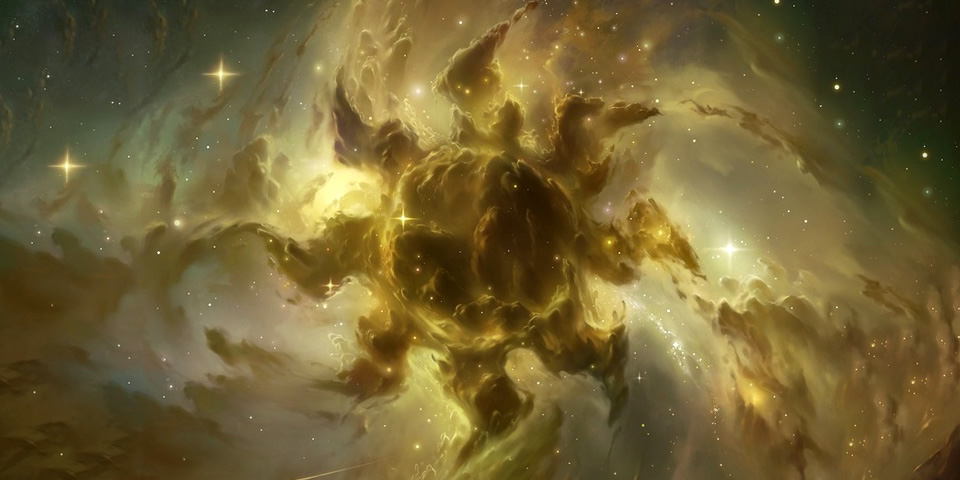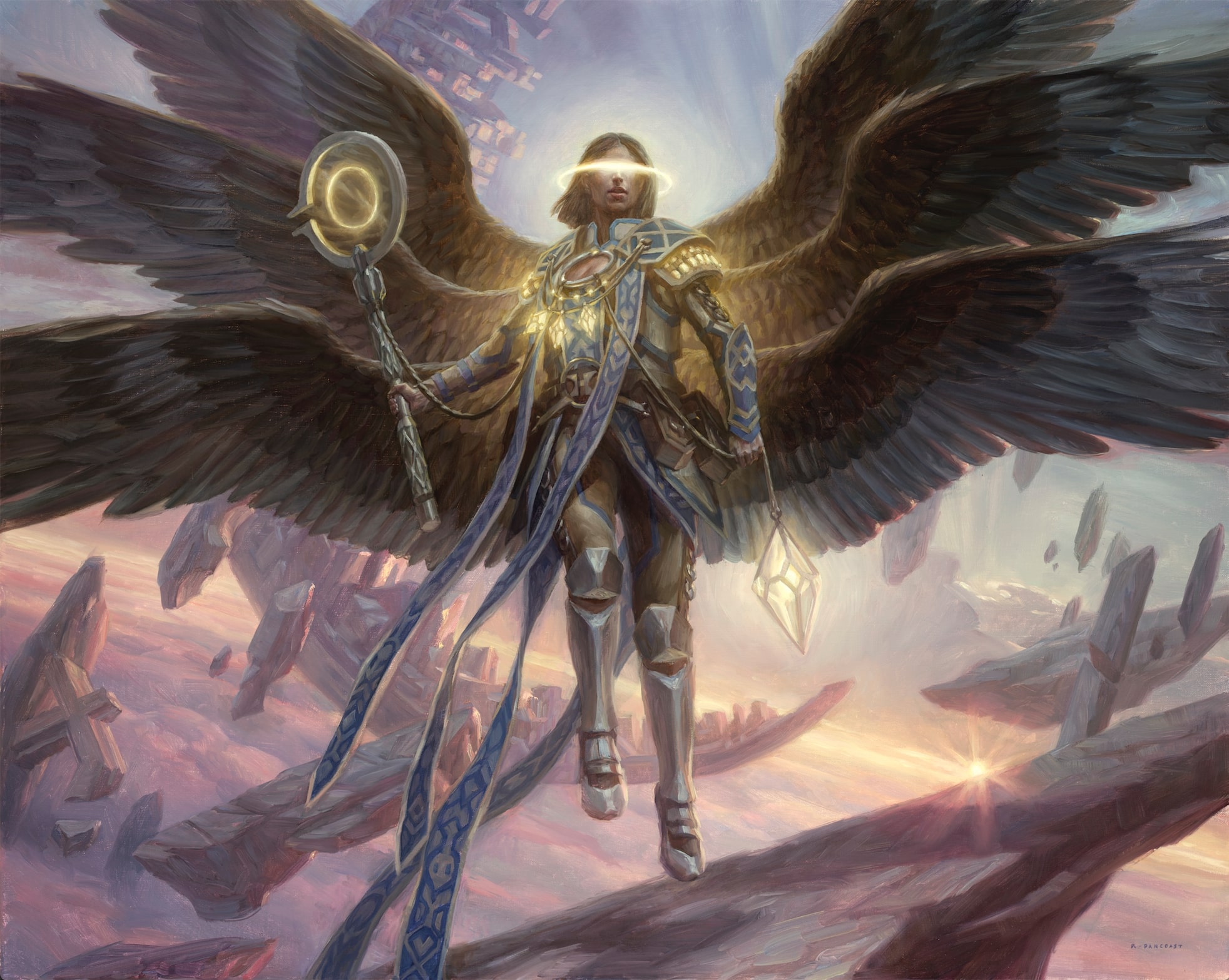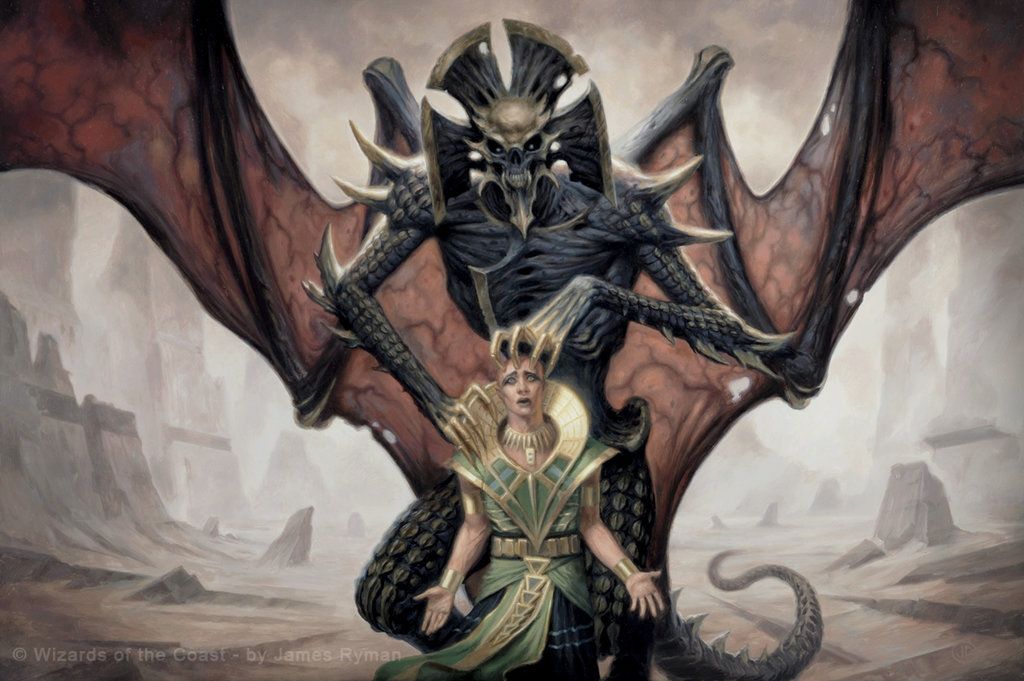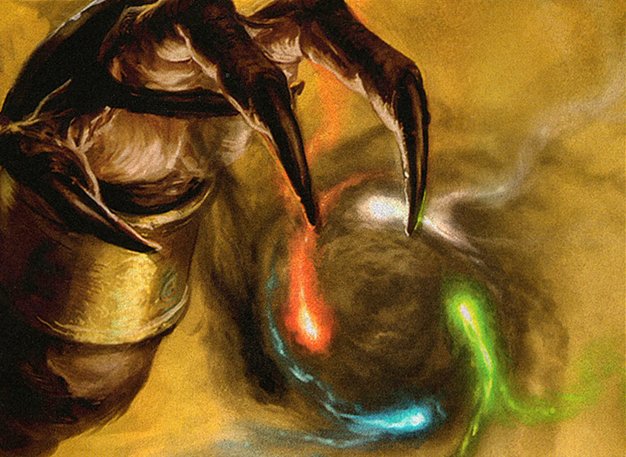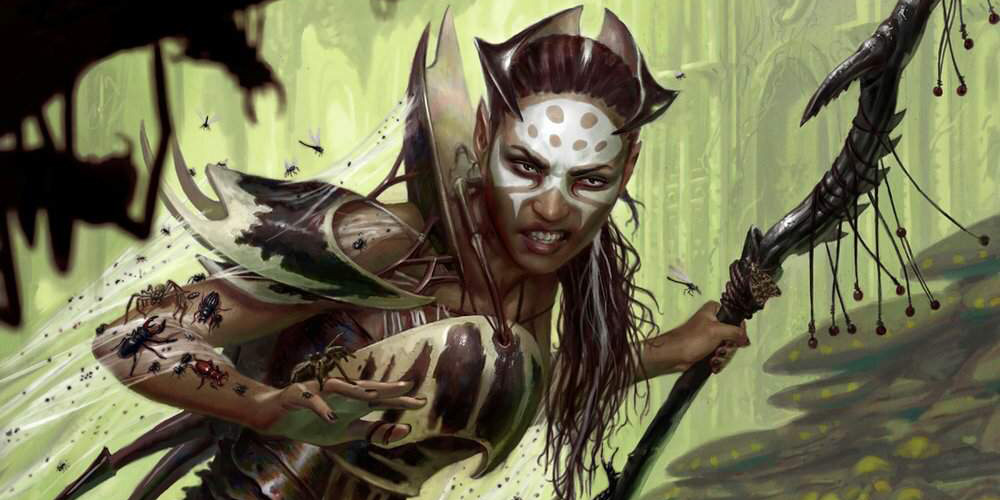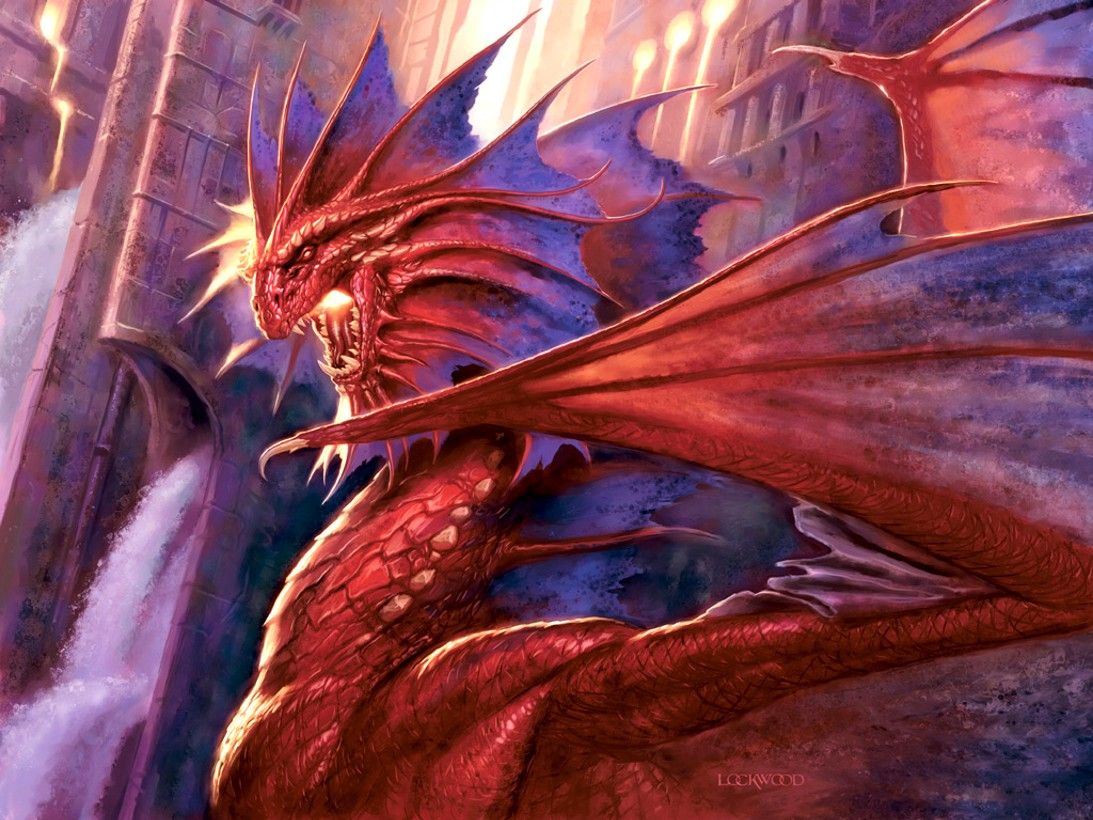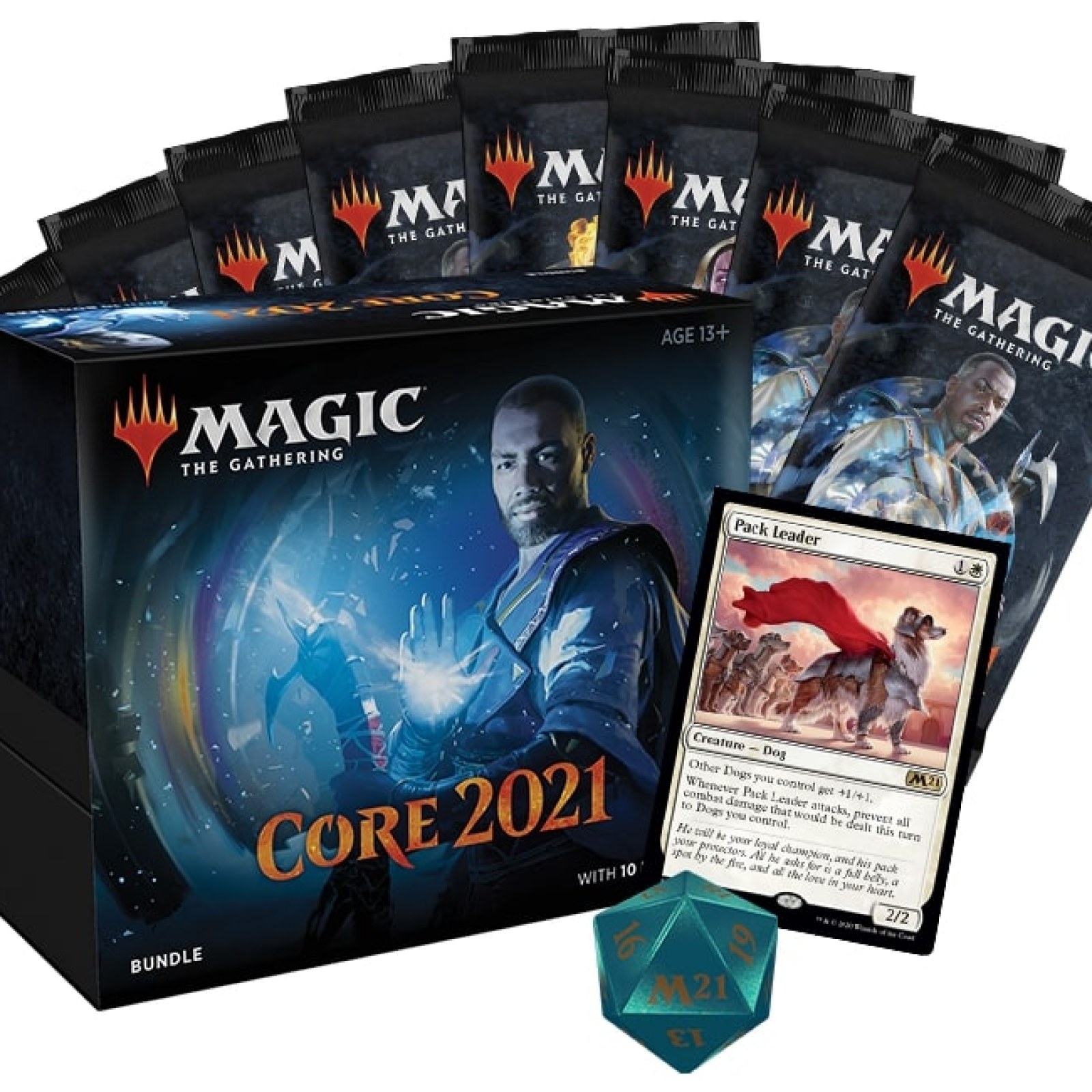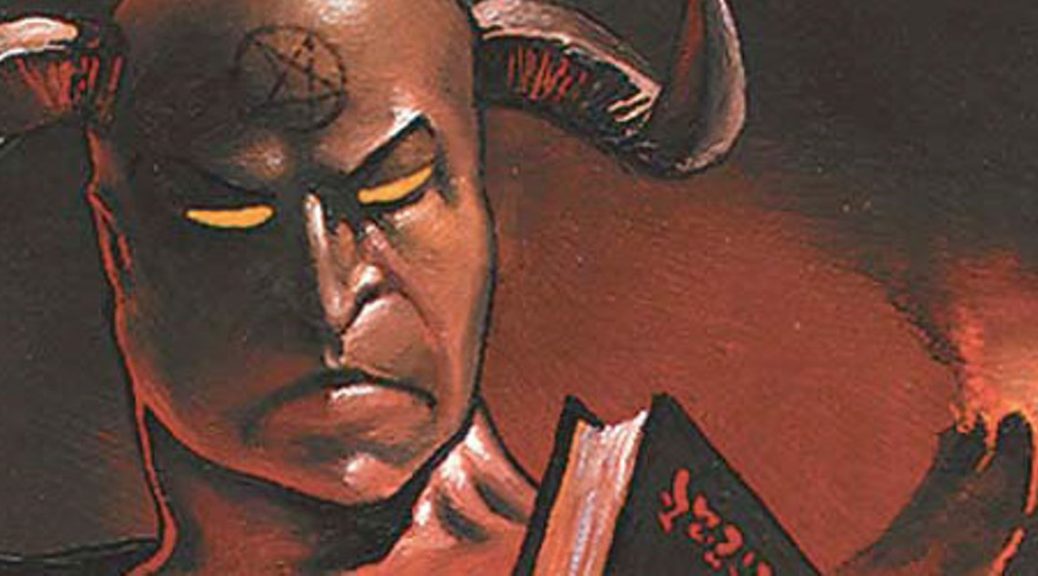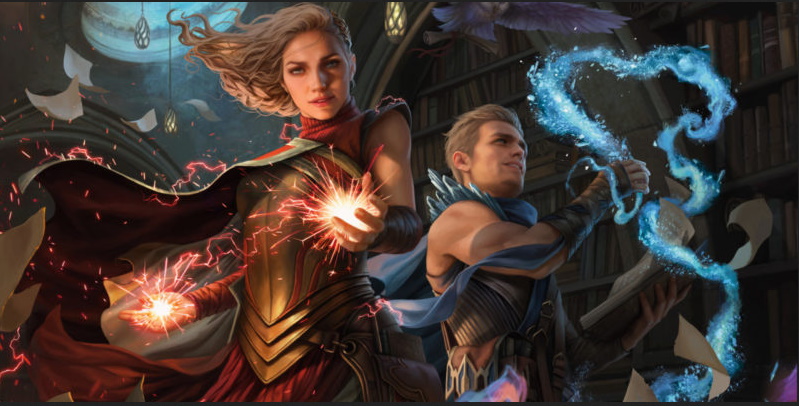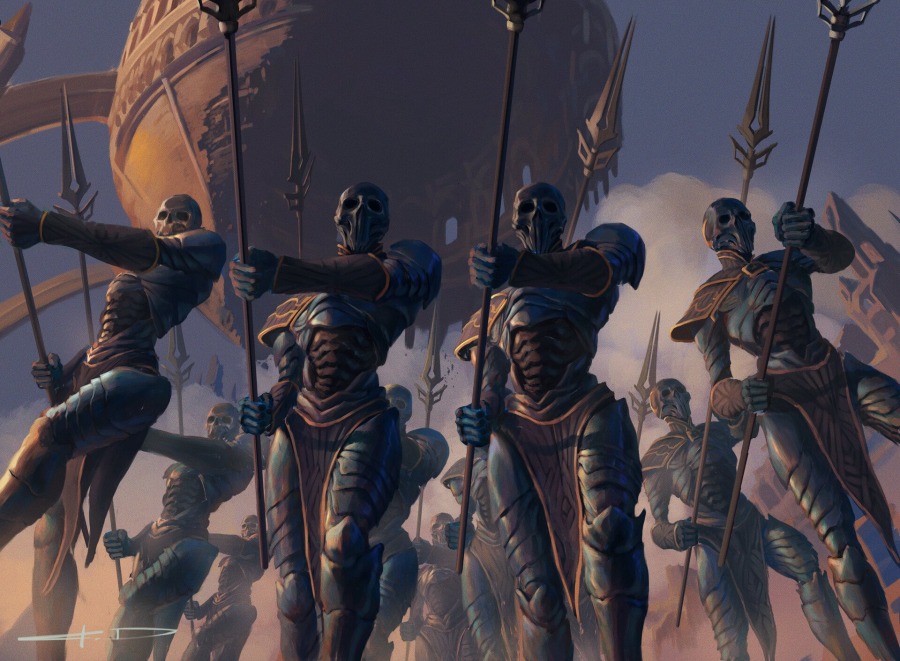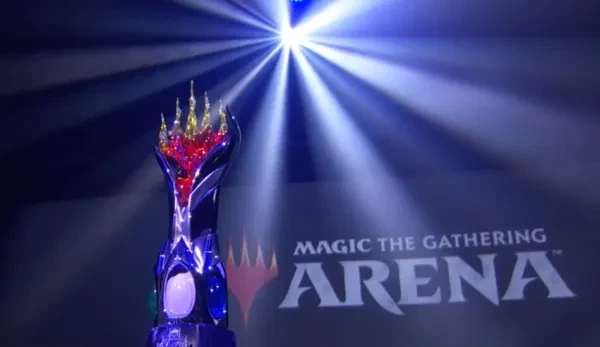
One day after Kristof Prinz commandeered his Four-Color Reclamation deck to the top of the Player’s Tour, Wizards of the Coast dropped the huge ban hammer that shook the entire Standard metagame. Not that we’re saying that we did not expect this change, but some we’re just left wondering, ‘why only now?’.
From the archetype crushing Teferi, Time Raveler, to the namesake of Temur Reclamation decks, the Wilderness Reclamation, these cards solidified their position in the Standard metagame. Now that these cards, along with Growth Spiral and Cauldron Familiar, are unplayable, new decks are rising in prominence while some old archetypes are making a comeback to the metagame. Here is our list of decks that we guarantee will dominate the board.
10. UW Control
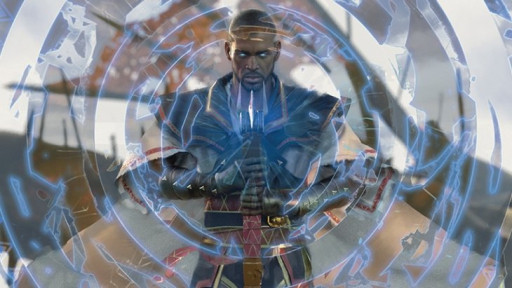
The only thing constant in MTG Standard is change... and Teferi being present.
No top ten decklist is complete without the addition of a control archetype in it (yes, we can admit that we may be control freaks). Even with the exit of Teferi, Time Raveler, control still has a lot of firepower left in it to compete in today’s meta. Although it secures most of its power from its sideboard strategy, splashing in either black or red can help this deck address its issues against aggro matchups.
What’s good about this deck?
- Tried and tested archetype. Control decks never really leave the meta as there are always new cards to utilize for this archetype. Its form may vary but at the hands of an experienced player, the deck’s potential gets completely maximized.
- It answers a wide range of threats. UW can already deal with the usual threats in Standard but splashing in black or even red can unlock more firepower in this deck. Black cards have access to graveyard-hate cards that are important when dealing with sacrifice decks. Red, on the other hand, can easily blow something up with its cheap removal.
- Win conditions galore. Control decks in today’s meta can quickly turn into beatdown decks by mid- to late-game phases as more creatures fit this archetype. Aside from the beatdown, other variations of UW control have access to cards that will deck the opponent. And if these two reasons are not enough, there is always that possibility of completely annoying your opponent into concession.
How to play this deck effectively
- Understand that your life total is also a resource you can utilize during the game. Shocking in a land to have mana open for a counterspell may not seem like much but even just allowing your opponent to doubt their play is already a win. Winning at 1 life is as sweet as winning at 100.
- Try to extract more value out of your Shatter the Sky. It may mean holding back for a little longer and letting the opponent get in more attacks. Refrain from slamming a wrath just to remove a single threat on the board as you have many cards to do that.
- Patience is always the key. New players often have the knack of countering every spell that the opponent casts. However, understanding the opposing deck and the meta can help you choose what cards are worthy of getting countered.
- Choose the right counterspells to run in your deck. As I have said earlier, there are always new cards that fit this archetype especially on the side of counterspells.
- Control decks do not necessarily mean that you run full copies of counterspells. Sometimes, swapping in a playset of counterspells can give you additional slots for those late-game bombs or the necessary removal.
Decklist
- 4 Narset, Parter of Veils
- 4 Teferi, Master of Time
- 2 Yorion, Sky Nomad
- 2 Archon of Sun’s Grace
- 3 Dream Trawler
- 3 Shatter the Sky
- 2 Birth of Meletis
- 3 Elspeth Conquers Death
- 2 Brazen Borrower
- 3 Mystical Dispute
- 2 Neutralize
- 2 Glass Casket
- 2 Dovin’s Veto
- 1 Castle Ardenvale
- 2 Raugrin Triome
- 2 Castle Vantress
- 4 Hallowed Fountain
- 4 Temple of Enlightenment
- 6 Plains
- 7 Island
9. Mono-white

Not all that glitters is gold. Especially this deck because it will move you higher than Gold in the rankings.
If you’re looking for a deck that only needs one creature on the battlefield to win the game, look no further at mono-white. Slap in a Turn One Healer’s Hawk or Gingerbrute and you’re good to go. Of course, you’re gonna need more than just a single creature but worry not, white has the best creature enchantments that will pump your 1/1 to a 10/10 and I am not even exaggerating. And did I mention that you can retrieve those one- and two-drops from the graveyard?
What’s good about this deck?
- Budget-friendly. One rare card is all that is needed to make this deck strong. Even without Lurrus, you can still consistently win your BO1s. This deck may be the most valuable in terms of power-to-rarity giving you the most bang for your buck.
- You only need at least three lands. Of course, a consistent land drop is a nice thing to have, but with 21 lands, running into mana woes is inevitable. Luckily, you only need a few lands to stabilize your board. Even if your creature or enchantment gets removed, your opponent surely spent more mana to do so, giving you more advantage in terms of value.
- Anti-removal. By the time the opponent draws a removal, you already assembled your arsenal to protect your creatures. If for some reason, your opponent was able to remove your threats before you can protect them, Lurrus can easily bring back those creatures and enchantments.
How to play this deck effectively
- It is a pretty straightforward aggressive, beatdown deck. As long as you have plays on your first two turns, you can easily run away with the game. A key tip to utilize the potential of this deck is to mulligan until you have a creature and multiple enchantments on hand. You can still do well with just a five-card starting hand compared to a full hand that will just mana flood.
- If you will still have mana available after casting Alseid, then cast it. Otherwise, hold on to it for another turn. Casting Alseid on its own will just get the attention of your opponent’s removal.
- Don’t be afraid to trade. You have access to your graveyard once you cast Lurrus so restabilizing your board state will not be a huge problem. And, more often than not, your opponent will not have the same luxury of casting things from their graveyard so when you are in a stalemate, just trade.
- It is better to run more creatures than just a single one where you attach all your enchantments to. This will put more pressure on them than having only one 5/5 creature that they can easily target with removal.
- Don’t wait too long before you deploy your Stonecoil Serpent. You don’t have to cast it for a lot as there are already multiple enchantments on your deck to power it up. Getting it in early will put a lot of pressure due to its protection from multicolored.
Decklist
- 1 Lurrus of the Dream-Den (companion)
- 4 Healer’s Hawk
- 4 Gingerbrute
- 4 Alseid of Life’s Bounty
- 4 All That Glitters
- 3 Glaring Aegis
- 3 Sentinel’s Eyes
- 3 Solid Footing
- 3 Stonecoil Serpent
- 4 God’s Willing
- 3 Fight as One
- 3 Karametra’s Blessing
- 18 Plains
- 3 Castle Ardenvale
8. Elementals
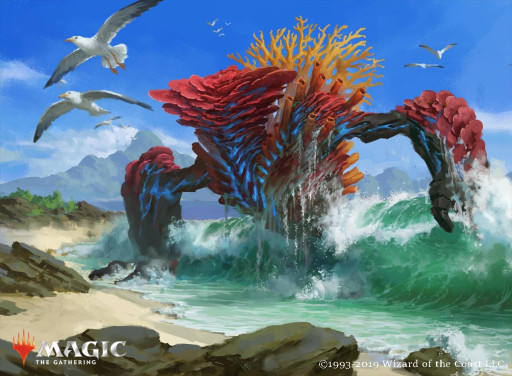
Whoever said that there are only four elements, completely forgot the element of surprise brought by these Elementals.
This tribal deck is very versatile. It functions as an aggro-ramp-control-beatdown deck with a variety of threats. Getting your Risen Reef to stick for even just a couple of turns means that you have a creature form of Growth Spiral on the battlefield to ramp you and fuel your hand. You can still squeeze out the juice from this deck before its key pieces go out of the rotation.
What’s good about this deck?
- Versatility. Need I say more? This deck can flat out brawl with aggro decks, grind it out with midrange decks, and it can actually hold its own against control matchups. The variety of card functions in this deck is just surreal with a lot of enter-the-battlefield mechanics in play.
- It has access to cheap removal and counterspells. Temur can be argued as a more aggro version of control decks as it has access to ramp and this same principle can be carried out in Elementals. Swapping out a few elementals to accommodate counters and removal can help stabilize your side of things early.
- Temur is dominating the meta. Even with the shutdown of reclamation decks, Temur still has a lot of potential in it as seen in the meta today. By playing the Elementals version of Temur, you can easily break mirror matches that are often just decided with who has the better opening hand. The good thing with Elementals is that it can have a rocky start but it will easily stabilize as it has a lot of early threats that can transition to late-game closers.
How to play this deck effectively
- Build around Uro. Sure, Uro is not an elemental but it is a staple for all decks with blue and green in its mana source. Playing a Turn Two Leafkin Druid followed by a Turn Three Uro can open up your mana for another mana fixer that turn. And, it is always good to place Uro on the graveyard early as you must have early access to its Escape.
- No Reef, No Uro = No Keep. Don’t be afraid to mulligan your opening hand especially if there is no Uro or Risen Reef in it. The logic here is simple, Risen Reef or Uro can easily get you back those cards you mulliganed. Getting stuck with too much land or too much ramp in your hand will equate to nothing if you do not have anything to fuel your board.
- You can substitute Chandra, Awakened Inferno with Chandra, Acolyte of Flame to fuel your Risen Reef. Having an Acolyte of Flame on board means that you get two additional triggers to Risen Reef per turn which will equate to more value.
- Don’t just slam all your elementals on the board. This deck is more of a combo deck and clearing your hand by casting all the elementals without your key pieces on board will make you lose out on some value.
- Hold out on your Omnath as it can be a key removal spell in the latter stages. If you are utilizing the deck that uses Chandra, Acolyte of Flame, then you have very limited removal. Using Omnath as removal becomes more of a need to deal with their larger creatures.
Decklist
- 4 Uro, Titan of Nature’s Wrath
- 4 Risen Reef
- 4 Leafkin Druid
- 3 Omnath, Locust of the Roil
- 3 Cavalier of Thorns
- 3 Creeping Trailblazer
- 3 Storm’s Wrath
- 3 Overgrowth Elemental
- 3 Cloudkin Seer
- 2 Chandra, Awakened Inferno
- 3 Fabled Passage
- 4 Temple of Mystery
- 4 Breeding Pool
- 3 Temple of Abandon
- 4 Stomping Ground
- 4 Steam Vents
- 2 Forest
- 2 Mountain
- 2 Island
7. Red Deck Wins
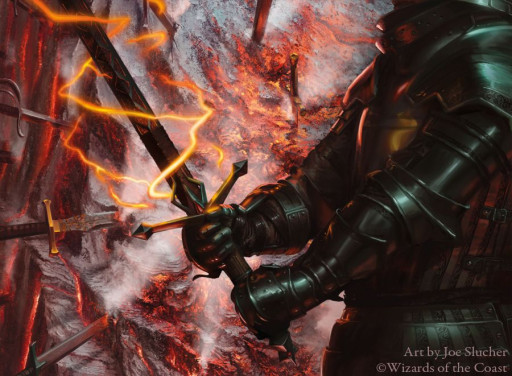
How about we turn that 4/3 giant to a 5/4 double-striking monster with trample?
Mono-red decks are known to be the most aggressive decks in the Arena. Mana screw can’t even hinder this deck's strategy as it uses a bunch of low-cost, hasty creatures that will overwhelm the opponent in the early game. RDW decks also boast large creatures to deliver the final blows in the late game. Despite most of its key pieces rotating out this September, it’s not yet too late to jump in the RDW train.
What’s good about this deck?
- It is a more refined version of mono-red aggro. Mono-red aggro focuses on casting an overwhelming amount of low powered creatures at a fast rate. This deck, however, does not completely rely on the quantity of the creatures but also their quality.
- Fast and grind-y. This is a deck that can take care of the opponent fast but it has the arsenal to battle it out even at later stages with its ability to gain card advantage. Light up the Stage can be used to ensure that you hit your land drops but it can also be used to refuel your hand at the closing phases of the duel.
- Brash Taunter adds flavor to the deck. If you are a fan of flavorful wins, this version of the deck will definitely suit you as it is a unique mechanic that can be overpowered if combo’d with the right cards.
How to play this deck effectively
- You want to lead with an early play on Turn One with either Fervent Champion or Tin Street Dodger. This applies early pressure to the life total of the opponent.
- The follow-up play on Turn Two will greatly depend on the matchup. A Robber of the Rich can be used to tear through the opponent’s deck given that the battlefield is empty. If you are against a control matchup, casting Runaway Steam-kin at Turn Two can help you pull away.
- If you are in a sketchy hand that may encounter land problems, an early Light Up the Stage can help you in your land drops. However, if you have the right amount of mana, you can hold on to this card for future refueling.
- Keep pressuring the opponent by putting in continuous attacks. Doing so will help remove the attention to a possible Embercleave which can close out the game easily.
- Utilize your Robber of the Rich in the early game to chip away key pieces from your opponent’s deck. You don’t necessarily have to cast them but you may find at least one or two cards that can help you close out the game.
Decklist
- 4 Bonecrusher Giant // Stomp
- 4 Fervent Champion
- 4 Runaway Steam-kin
- 4 Anax, Hardened in the Forge
- 4 Tin Street Dodger
- 2 Infuriate
- 2 Brash Taunter
- 4 Light Up the Stage
- 3 Torbran, Thane of Red Fell
- 3 Robber of the Rich
- 4 Embercleave
- 18 Mountain
- 4 Castle Embereth
6. UW Flyers
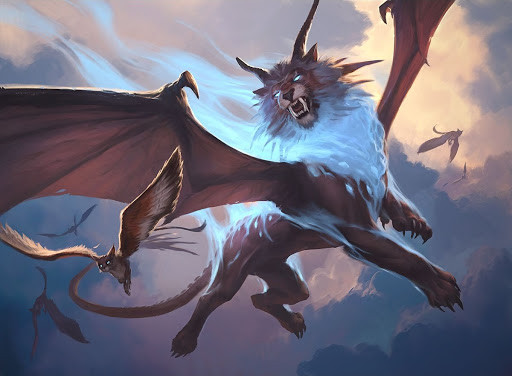
This creature is a mixture of a lion, a goat, and a dragon. Who wouldn't be scared of that?
Is it a bird or a plane? Or maybe an angel? It doesn’t matter. As long as it flies, you can see it in this deck. This deck will glide around opponents and swoop in for the victory. Need I say more?
What’s good about this deck?
- Cheap and economic. This deck is considered budget-friendly as it utilizes Common and Uncommon cards and only occasional Rares. This deck may be the best in terms of power-to-value ratio, not the same level as mono-white weenies but it comes as a close contender.
- It is an aggro deck that is much more difficult to contain. A few 1/1 attackers won’t hurt that much but once the value comes, it will be very hard to stop. With Empyrean Eagle giving out a +1/+1 pump to all of your other creatures, lethal damage can be easily achieved, especially in the air where only a few creatures can contest in the early game.
- Very easy to master. It may not be too straightforward as other aggro decks but it is not as complicated as most combo decks, either.
How to play this deck effectively
- The key to unlocking the potential of this deck is having a good curve until Turn Three. An Empyrean Eagle on curve can significantly help you run out your other creatures with one less mana. It also gives the bonus of pumping your creatures.
- Sephara, Sky’s Blade on Turn 4 can cause your opponent to hit the concede button almost immediately as there are a few cards that can cham block a 7/7 flyer that grants indestructibility to other flyers.
- Leave up mana for Lofty Denial to protect your Sephara. Getting your Sephara to stick even just for two turns will definitely give you the bang for your buck.
- Against slower decks, you can opt to hold on to your Empyrean Eagle and just play it as a pump spell to get the extra points of damage in.
- Save your Rally of the Wings for defense. Unless you will achieve lethal by casting it on your combat phase, it seems like a better idea to hold on to it. This deck lacks ways to defend against creature-heavy decks and having this card will come in handy.
Decklist
- 4 Healer’s Hawk
- 4 Spectral Sailor
- 4 Empyrean Eagle
- 3 Sephara, Sky’s Blade
- 4 Skycat Sovereign
- 4 Faerie Miscreant
- 4 Lofty Denial
- 4 Staggering Insight
- 4 Watcher of the Spheres
- 3 Rally of Wings
- 2 Temple of Enlightenment
- 4 Hallowed Fountain
- 6 Plains
- 6 Islands
- 4 Fabled Passage
5. Rakdos Sacrifice
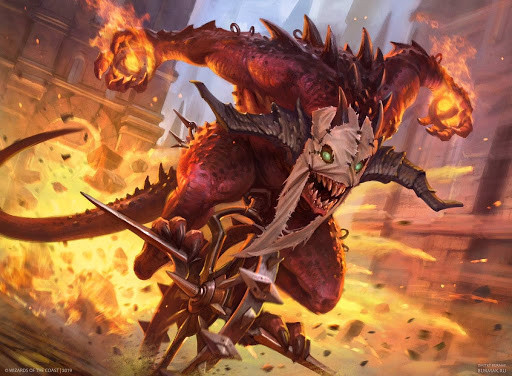
I see you want to destroy my creatures, well, don't play with fire if you don't want to get burnt.
Your opponents can’t kill your creatures if you sacrifice them first. Cue in that thinking man meme. Traditional decks will aim to remove their opponent’s creatures off the battlefield but once you wield this deck, opponents will scramble to keep your creatures where they are. A few graveyard hate cards can’t easily stop the value engine of this deck.
What’s good about this deck
- HUGE value engine. Once you get your key pieces onto the battlefield, it's value town from there on out. Woe Strider and Priest of the Forgotten Gods can be sacrifice outlets while Midnight Reaper and Mayhem Devil just pings the enemy lifeless.
- You don’t have to worry too much about opponent removal. You can easily sacrifice a creature in response to a removal to extract value from it, especially if multiple copies of Mayhem Devil are on the field.
- Very satisfying combo. You must admit that setting up a huge combo to end the game is something that MTG players always try to achieve.
How to play this deck effectively
- You would want to have a Gutterbones on Turn One as it can start chipping at the opponent’s life total by the next turn.
- Serrated Scorpion is a good opener especially if you’re on the draw against a more aggressive deck as it can provide a body for blocking.
- Try to assemble the combo pieces the following turns with Priest on Turn Two, Mayhem Devil on three, and Midnight Reaper or Woe Strider on four. This curve will optimize your mana usage giving you a better chance at stabilizing.
- If you have an opening hand that is already good with mana, you can hold on to your Fabled Passages as they can chip in extra damage once you have already deployed Mayhem Devil.
- A duel against a slow, midrange deck can be won by applying constant pressure with your one drops as well as a Dreadhorde Butcher. The beauty of this deck is that it can transition to an aggressive type.
Decklist
- 3 Gutterbones
- 3 Serrated Scorpion
- 3 Midnight Reaper
- 3 Judith, the Scourge Diva
- 4 Mayhem Devil
- 4 Priest of the Forgotten Gods
- 3 Woe Strider
- 3 Claim the Firstborn
- 3 Village Rites
- 2 Bolas’s Citadel
- 2 Call of the Death-Dweller
- 4 Dreadhorde Butcher
- 4 Blood Crypt
- 4 Temple of Malice
- 3 Castle Locthwain
- 4 Fabled Passage
- 2 Mountain
- 6 Swamp
4. Mono-black
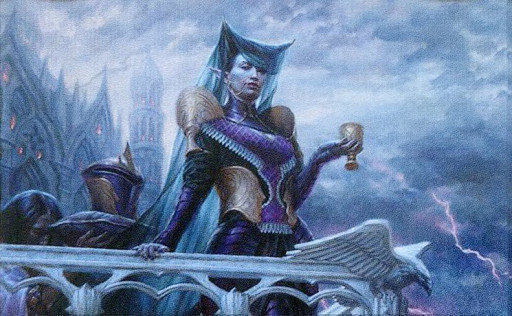
We did not come here to contend against the meta. We came here to CHANGE it.
Riku Kumagai may have lost the Players Tour Finals, but he definitely won the hearts of fans worldwide with his rather unique spin on an aggro deck. I mean with more than 50% of the field being Reclamation decks, it was inevitable that one will win it all, right? But it wasn’t an easy win for Prinz as this mono-black deck actually gave him a run for his money. Mono-black has the perfect balance of removal and aggressive pieces to surprise an unsuspecting midrange player.
What’s good about this deck
- Unique in today’s meta. Aggro archetypes have always been present in the meta. The mono-black variant, however, is considerably new to the scene as it was viewed as a midrange, combo deck in the past. This deck brings the element of surprise as it hides in the image of black as a midrange deck.
- Recurring threats. Gutterbones and Murderous Rider are the two ‘unkillable’ cards in this deck. Opponents will just waste their resources trying to permanently remove these cards from the game.
- Very versatile. This deck can easily transition to a different deck archetype depending on the way you play it. It can even be mono-black devotion if you put in Gray Merchant of Asphodel as you have high devotion contributors in Ayara and Tymaret. It also easily deals with the different decks in the meta with ease as it has access to removal and hand disruption.
How to play this deck effectively
- With this deck’s versatility, there is no right or wrong way to play. Utilize your early turns by establishing the board and getting early hits in to slowly reduce your opponent’s life total.
- Don’t hesitate to use removal on your opponent’s early threats. With this deck, you don’t plan to be in the game for long so dealing with early creatures that will hinder your constant barrage is a must. A full playset of Heartless Act is more than enough to take care of early threats while Swift End can deal with much larger threats.
- Of course, you don’t have access to your opponent’s decklist in ranked gameplay, however, you can easily spot an aggro matchup from a more midrange type. With your intuition on what your opponent’s deck looks like, you can decide whether to run out a hand disruption card or just continue smashing face.
- Attacking the opponent’s hand is as essential as attacking his life total. Most games are won by disrupting the opponent’s strategy so going for a more disruptive strategy than an aggressive one can help you get those wins in ranked.
- Replace 2 Agonizing Remorse with Gray Merchant of Asphodel for a more flavorful deck. This deck will not have any problems with devotion as it is a mono-colored deck. Having a Gray Merchant will just broaden the range and it will create a more surprising interaction.
Decklist
- 2 Blacklance Paragon
- 4 Gutterbones
- 4 Hunted Nightmare
- 4 Kitesail Freebooter
- 4 Knight of the Ebon Legion
- 2 Murderous Rider // Swift End
- 3 Rankle, Master of Pranks
- 2 Tymaret, Chosen from Death
- 3 Spawn of Mayhem
- 3 Ayara, First of Locthwain
- 4 Heartless Act
- 2 Agonizing Remorse
- 18 Swamp
- 3 Castle Locthwain
- 2 Mobilized District
3. UBx Flash
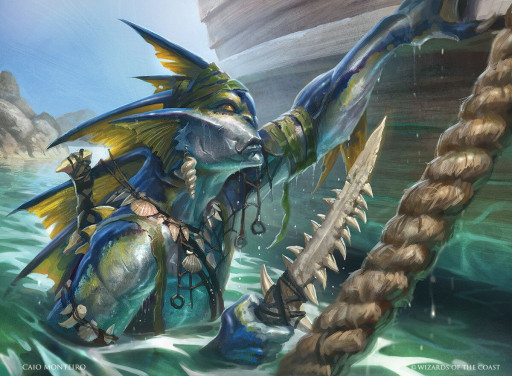
You thought you've seen the last of us. We thought so too. Good thing the ban hammer saved us.
Ah, yes, a glorious comeback for the flash archetype as we bid 3feri, the card that single-handedly removed this deck in the meta, a huge farewell. Flash decks are an amazing twist as they function both as a control deck and as an aggro deck. Play a land and wait for your opponent’s end step. Next thing you know, they’re already scooping up after seeing a flying shark that can attack for lethal.
What’s good about this deck
- No more Teferi. Well, of course, there is still the threat of Teferi, Master of Time, but at least it does not render this deck unplayable. The main reason why this deck did not last long in the meta despite having heavy hitters is that the whole archetype is just canceled by Teferi, Time Raveler.
- Even if you use a common decklist, it still carries tons of surprises. The decklist of flash decks can be almost the same with little to no variations but because of its playstyle, you can still pull out amazing plays that will catch your opponent off guard.
- A green splash will extract maximum value out of this deck. There are already a lot of hitters and combo pieces in UB but splashing in green will allow you access to Nightpack Ambusher and Wildborn Preserver. These two cards are great value engines as they can provide additional bodies to close out games much quicker.
How to play this deck effectively
- Play a land, then pass the turn. This is basically what the deck is meant to do with its ability to cast creatures anytime. By utilizing this mechanic, it will be more difficult to predict your moves. Having two mana open on your opponent’s turn can mean many different possibilities.
- Make your opponents think twice about casting their spells. This will help you establish your board quicker. Similar to what I mentioned above, use and abuse the flash mechanic as it can be used to bluff a counterspell.
- Cast in an early Gadwick to help manage the opponent’s board. By having Gadwick available early, you can just tap down their blockers every time you cast a spell making it easier to land lethal.
- Wildborn Preserver can be a great mana sink. Almost all of your cards are non-humans which means that the ability of this card will trigger every time. You will also have extra mana to spare with Cunning Nightbonder’s cost reduction capabilities.
- Removal is limited in this deck so choosing when to use Heartless Act can spell the difference with you getting that W or you hitting that concede button early. If you can’t remove an opponent’s creature, you can use Blacklance Paragon’s ETB ability to block their attackers.
Decklist
- 3 Spectral Sailor
- 4 Brineborn Cutthroat
- 3 Blacklance Paragon
- 4 Thieves’ Guild Enforcer
- 4 Slitherwisp
- 3 Cunning Nightbonder
- 3 Brazen Borrower
- 3 Gadwick, the Wizened
- 2 Heartless Act
- 2 Disfigure
- 3 Nightpack Ambusher
- 3 Wildborn Preserver
- 3 Watery Grave
- 3 Breeding Pool
- 2 Overgrown Tomb
- 3 Zagoth Triome
- 2 Temple of Deceit
- 1 Castle Lochtwain
- 2 Castle Vantress
- 3 Fabled Passage
- 2 Forest
- 1 Swamp
- 1 Island
2. Gruul Aggro

Gruul is known for two things: destruction and annihilation.
Gruul is known to be quite an aggressive deck but not in the way that we are accustomed to. They don’t overwhelm the battlefield with itty bitty 1/1s, they crush the opponent with huge creatures swinging for lethal even before the opponent casts their first spell. It captures the best of both worlds of green and red. And by best, I mean, the largest green and red creatures combined in a deck. I really cannot oversell this deck as it is *that* good given the current card pool.
What’s good about this deck
- Heavy hitters. I’m not just talking about big creatures that can swing for lethal. I’m talking about the all-around threat that this deck possesses. It can deal with planeswalkers, early creatures, and even the opponent’s graveyard. The creatures also increase in potency as they deal with these threats.
- A huge threat in the early game. A Turn One Pelt Collector can start hitting for early damage. Following it up with a Turn Two ramp with Paradise Druid can help stabilize your board early while applying pressure to the opponent.
- Even a bigger threat in the late game. A late-game Gruul deck is rarely seen as it often finishes the job at the early stages. However, if you see yourself grinding it out against late-game decks, worry not as you can still dominate with cards like Skarrgan Hellkite and Elder Gargaroth
How to play this deck effectively
- Pelt Collector is a staple in this deck. An opening hand without one would be problematic. Consider taking a mulligan if neither Pelt Collector nor Paradise Druid is in your starting hand as these two are essential.
- If these two aren’t in your starting hand, you can still keep provided that you have land drops for the first few turns. Your play may be delayed but ensuring a good mid to late game strategy is also essential.
- Make sure that you have a follow-up play for your Pelt Collector. Dropping it on Turn One without having the follow-up creature that will pump it in Turn Two will just waste its potential and it will just be the primary target of your opponent’s removal.
- A Turn Two Zhur-Taa Goblin can replace the usual Paradise Druid, especially if you have a Domri follow up on your next turn. The one mana difference, however, can be a huge deal if you are against a mirror matchup so gauging the opponent’s deck is still vital in securing your win.
- Late game will just be a balance of keeping the pressure and refueling your board. By this time, the opponent’s life total will be in the red and it’s just a matter of time before you see them scoop.
Decklist
- 3 Zhur-Taa Goblin
- 3 Scavenging Ooze
- 4 Pelt Collector
- 4 Paradise Druid
- 4 Questing Beast
- 4 Bonecrusher Giant // Stomp
- 4 Gruul Spellbreaker
- 2 Elder Gargaroth
- 2 Skarrgan Hellkite
- 2 Domri, Anarch of Bolas
- 3 Embercleave
- 4 Stomping Ground
- 3 Temple of Abandon
- 3 Fabled Passage
- 7 Mountains
- 8 Forest
1. Bant Ramp
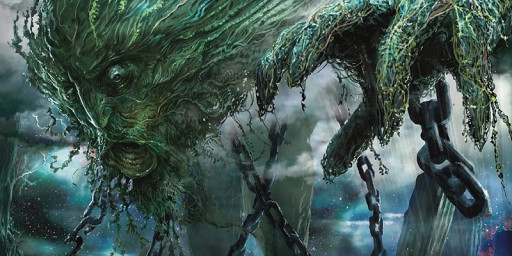
You really thought you can outrun nature? I am everywhere.
Despite the ban hammer getting dropped on Growth Spiral, Ramp is still a huge force in the Standard metagame. Being able to cheat in extra lands will surely help you cast those haymakers even before your opponent establishes their side of the board. You can see your opponent hitting that concede button as early as Turn 4.
What’s good about this deck
- Cultivate can be a substitute to Growth Spiral - Sure, Growth Spiral gives you card advantage and is an instant, but Cultivate can still take its place. The downside of Cultivate is that it is a three-mana sorcery but in terms of function, it does cover the job well by providing ramp and thinning the deck making it easier to find the huge creatures to end the game.
- Adding in white can help address issues against creature-heavy decks - UG Ramp can easily win games but having no removal or board wipe can be the downfall of this deck. That is why even without Teferi, Time Raveler, the Bant variant of ramp is still the more recommended version as it addresses the issue of removal with Elspeth Conquers Death and Shatter the Sky.
- It’s more than just an aggro deck - It does employ the same strategy of overwhelming the opposition with large creatures but there’s more to Bant Ramp than just being an aggro deck. It is flexible enough to compete in the early game and still have gas to close out during the later stages of the game. This is because it can also control the board with its board wipes, creature- and planeswalker-removal, and a bunch of counterspells. Throwing in a copy or two of Fae of Wishes is a cheat code that will effectively find an answer for that huge Stonecoil Serpent on the opponent’s board.
How to play this deck effectively
- Most decks pre-ban stopped using Paradise Druid in Ramp decks and I see this as one huge mistake. The banning of Growth Spiral makes my case stronger as more slots at two-drop are vacated, making room for Paradise Druid to help establish early mana advantage. Cultivate is a weaker version of Growth Spiral but it will still provide you with a much-needed ramp but at a higher cost.
- Know when to ramp. You see, ramp decks, just like aggro decks, aren’t as straightforward as you think. A lot of games are decided on the timing of spells.
- Turn 3 is where you will face your first dilemma of whether casting Uro or Cultivate. In an aggro matchup, you should almost always run out that Uro on curve to help pad your health. In more midrange matchups, an early mana advantage by Cultivate will greatly benefit your late game.
- Running out your X-mana cost cards. Just like the previous point, timing your drops is crucial in maximizing your advantage during the game. It may be tempting to drop an early Shark Typhoon especially in an empty board but keeping it so it becomes significantly larger can help not only in attacks but in blocking as well.
- Your Hydroid Krasis, on the other hand, can wait a bit longer as you gain more card advantage with this the more mana you pay. This can also be used to refill your hand and pad your life total at crucial moments.
Decklist
- 3 Uro, Titan of Nature’s Wrath
- 2 Jolrael, Mwonvuli Recluse
- 2 Hydroid Krasis
- 3 Paradise Druid
- 3 Nissa, Who Shakes the World
- 3 Teferi, Master of Time
- 2 Ugin, the Spirit Dragon
- 3 Cultivate
- 2 Migration Path
- 2 Mystical Dispute
- 2 Dovin’s Veto
- 2 Elspeth Conquers Death
- 3 Shark Typhoon
- 2 Shatter the Sky
- 1 Temple of Plenty
- 2 Temple of Mystery
- 3 Temple of Enlightenment
- 1 Breeding Pool
- 2 Hallowed Fountain
- 3 Temple Garden
- 4 Fabled Passage
- 3 Island
- 4 Forest
- 3 Plains
With the looming rotation of Guilds of Ravnica, Ravnica Allegiance, War of the Spark, and Core Set 2020, many of these decks may suffer heavy backlash come September 24. Regardless of that, I don’t see a huge meta shifting decklist in the future but we will never know. This list was constructed with the current meta in mind based on the most recent Players Tour Finals along with the implications of the recent bannings.
Hopefully, this list gave you an idea of what to expect in the Arena in the coming days. The decks mentioned constitute a huge chunk of the decks that you will see in matchmaking. Going for these meta decks in your next build will help you progress in the ladder but if you still choose to venture away from the meta and build that Mill deck, well at least you now know how to deal with the meta decks.

